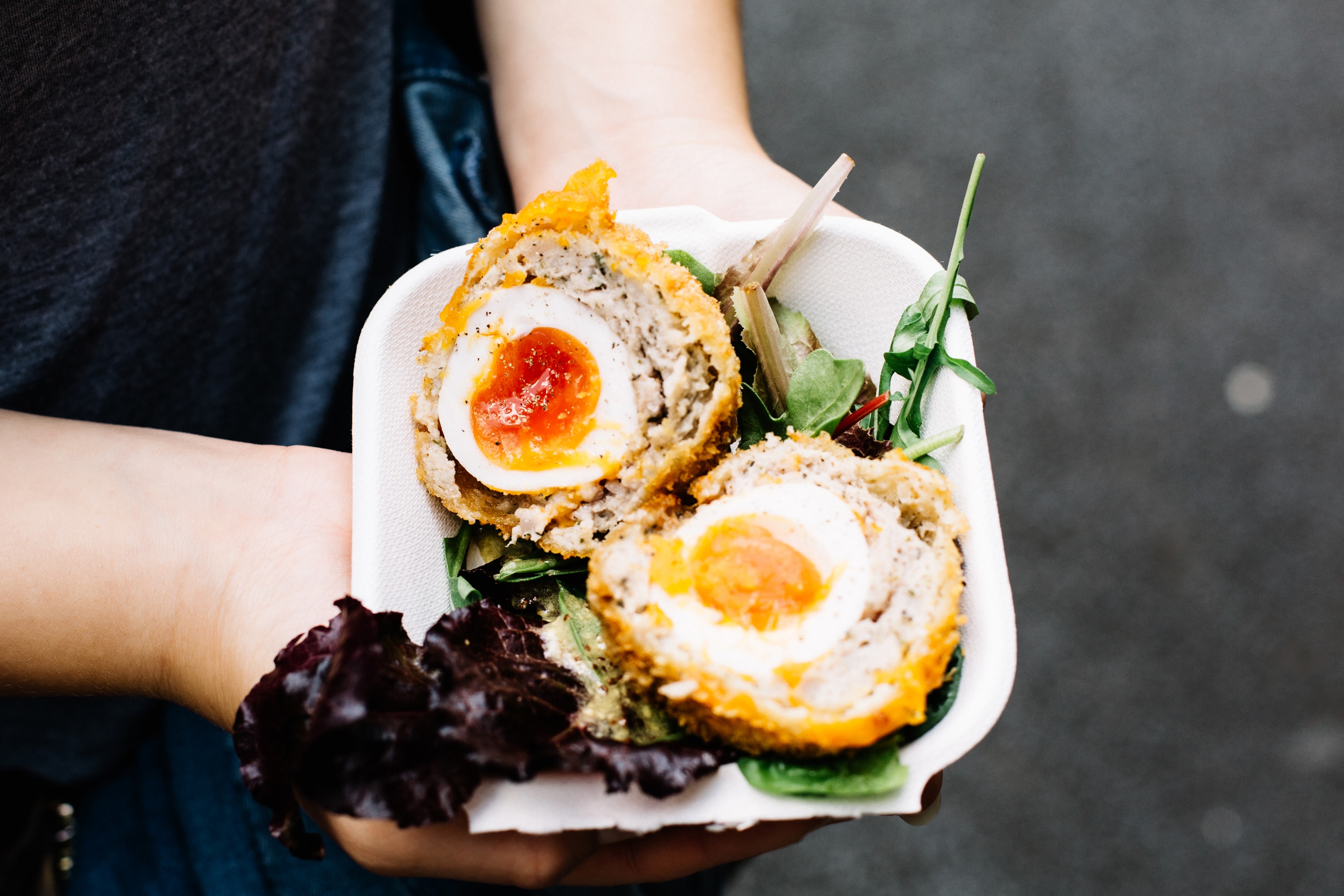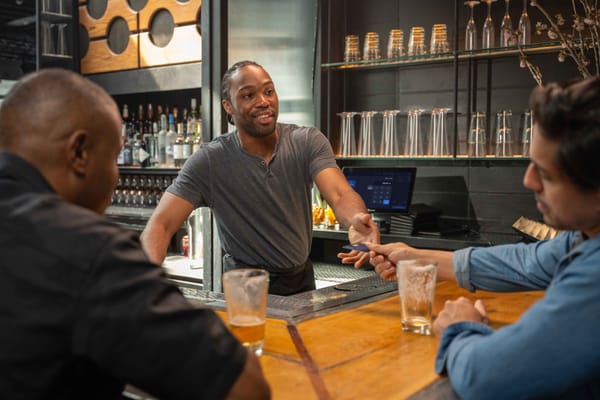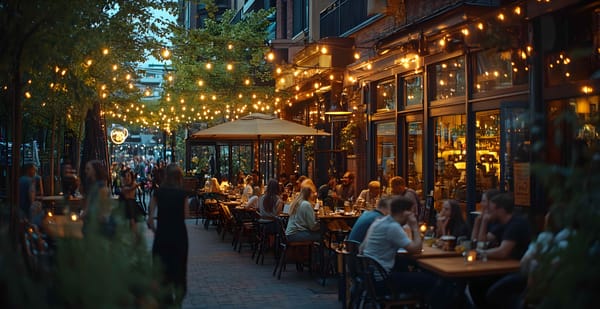"Gastropub" has become a popular restaurant industry term, alongside "fast casual" and "small plates." The term gastropub combines "gastronomy" and "pub," promising high quality food and drinks and a down-to-earth, casual vibe.
In contrast to traditional pubs, gastropubs are equal parts restaurant and drinking establishment. They're known for high quality elevated pub food on the menu and an extensive selection of beers, wines, liquors, and cocktails.
History of the gastropub
The Eagle pub is recognized as the first gastropub. In 1991, restaurateurs Mike Belben and David Eyre bought a London pub named The Eagle, expanded the kitchen space, added wine and liquor to the drink menu, and created a rotating menu of thoughtful, Mediterranean-inspired dishes.
The pub, or public house, is a staple of British restaurant culture. There are over 3,500 pubs in London, providing over 49,000 people with jobs. British pubs are both community gathering spaces for neighborhoods and key to local economies.
In the 2000s and 2010s, gastropubs gained popularity in America. Decorated chefs and successful restaurateurs saw potential in unfussy, well-crafted food served in a casual setting. Michelin added gastropub as a cuisine type in part of their famous guide to dining establishments.

What's on a gastropub menu?
Early gastropub menus riffed off traditional British food items, like meat pies, fish and chips, roast meats, and snacks like scotch eggs and a ploughman's lunch. As the restaurant genre evolved, many gastropubs offer fusion-inspired dishes, drawing from Indian, Chinese, and Korean cuisines. American gastropub menus include what's typically known as "bar food"—items like burgers and sliders, french fries, club sandwiches, and salads.
Drinks are an essential component of a gastropub menu. Alongside typical domestic and draft beers, gastropubs often showcase a wide selection of local craft beers and IPAs, sours, and stouts for more adventurous drinkers. Wine and craft cocktails are another must-have. Many gastropubs have capitalized on the booming popularity of spirits like whiskey and bourbon, creating extensive menus and hosting tastings to appeal to a new and fanatical audience.
Since most gastropubs straddle the line between restaurant and pub, they can appeal to an all-day crowd as well as families or non-drinkers. Gastropubs might offer a brunch menu and kids menu to accommodate this wider audience. Many feature rotating menus, so they can incorporate fresh and seasonal ingredients. While there's not likely to be a separate lunch and dinner menu, gastropubs might offer Sunday lunch specials or host pop-up restaurants with local chefs.
How does a gastropub compare to a typical pub?
At a traditional pub, guests can expect standard draft beer, spirits, and a few house wine options. Traditional pubs don't necessarily serve food, often allowing guests to order takeout from a nearby restaurant and selling mixed nuts, chips (or crisps), and other packaged snacks. If a traditional pub does serve food, it's likely pub food. Classic main dishes like shepherd's pie or fish and chips, potentially desserts like sticky toffee pudding to satisfy your sweet tooth.
5 Tips for operating a gastropub
Thinking about opening a restaurant like a gastropub? Here are some tips for operating a successful gastropub, from craft beer to staffing.
1. Adapt your food menu
Typical pubs resist change. They're traditional pubs for a reason—they usually offer traditional food items, classic beers, and a healthy serving of pub culture. Gastropubs, on the other hand, embrace change. It's part of the gastropub's DNA.
If you operate a gastropub, that means regularly updating your offerings, ideally once a quarter. Menu planning shouldn't come but once a year. Instead, take a menu engineering approach to retain your most popular dishes and ditch what isn't making you money. Test potential menu items by promoting them as specials. Let your kitchen get creative by re-imagining dishes with existing ingredients.
2. Host events
Gastropubs are so much more than eating and drinking establishments. They can provide a space for the community to gather while giving you another revenue stream. Like offering private event booking for birthday parties and corporate events. Also, you may consider hosting live music, trivia, comedy, pool or dart leagues to get more guests through the door. Be sure to spread the word about any event via email marketing and social media.
3. Offer flexible ordering
Unlike fine dining restaurants and other formal restaurants, gastropubs draw a clientele looking for a more casual dining experience. Experiment with having guests order at the bar or via QR code. If your gastropub has a large physical footprint, equipping servers with a handheld POS system can help them turn tables faster and get orders to the kitchen more quickly and accurately.
4. Staff appropriately
Behind every successful concept is a team of great people, and a gastropub is no exception. Restaurant management software can help your manager staff servers appropriately, so they're on location when your guests are. It not only improves the guest experience, it helps make staff's shifts more lucrative and maximizes their tips.
5. Keep a dynamic drink menu
You're providing something amazing to eat. Keep that same energy when assessing your drink offerings. Use restaurant POS reporting to determine which craft beers are best sellers and which are weighing down your drink menu. The same goes with craft cocktails—focus on drinks that can be pre-batched in part or in whole to save your bartender time and get those drinks out quickly.
More than a regular pub
Gastro pubs adhere to the rule "come for the beer, stay for the food." It explains the gastro pub's mass appeal. Whether you're a day drinker looking for the latest and greatest sour beer, or a family searching for a down-to-earth spot to enjoy burgers and decadent desserts, gastro pubs provide the necessary ingredients.












